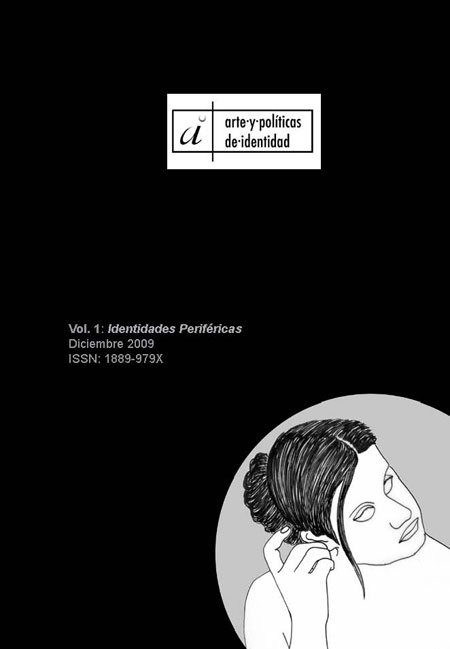Deshaciendo el vínculo melancólico: sufrimiento interior, dolor de género y nuevas subjetividades en el arte contemporáneo (body art “dolorista” y “giro performativo”)
Abstract
We will carry out a description of the two main types of different motivations that may be underlying the body art (“painful”) of the 60’s-70’s, that is, the body art (“painful”) that responds to an internal suffering (“activist”), and the the body art that experiments with the limits of the body; we will apply the theoretic concept of J. Butler’s gender pain (based on Freud’s “melancholic” concept) to explain, via an analogy with the melancholic process of the lost object, the psychological mechanism of “internal suffering” that could be activated in the body art “painful” (“activist”) in the case of non hegemonic identities (gender, sexual, ethnic), and whose melancholic bond produces an impoverishment of the ego (I) due to an identification with the object that has abandoned him (her) (or discriminated and ashamed him (her) in the case we are dealing with), so that the subject blames himself (herself), his (her) selfsteem deteriorates as a result of directing anger and pain towards oneself, instead of towards the objet that has abandoned him (her); we will extrapolate that explanation to the phenomenon of the emergence of the new subjectivities in the art of the nineties, so that, through the “performative turn” it has been possible to overcome in same ways the melancholic bond, as the anger and pain has been directed towards social claims.Downloads
-
Abstract309
-
PDF (Español (España))266
References
Butler, Judith (2001). Mecanismos psíquicos del poder. Teorías sobre la sujeción, Madrid, Ed. Cátedra.
Butler, Judith (1990). Gender Trouble. Feminism and the subversion of identity, Nueva York, Routledge.
Freud, Sigmund (1917). Duelo y melancolía.
Green, David; Lowry, Joana (2007). “De lo presencial a lo performativo: nueva revisión de la indicialidad fotográfica”, en Green, David (Ed.). ¿Qué ha sido de la fotografía?, Barcelona, Ed. Gustavo Gili.
Hernández Navarro, M. Á. (2006). La so(m)bra de lo real: El arte como vomitorio, Valencia, Ed. Alfons el Magnànim.
Jones, Amelia (1999). Body Art. Performing the Subject, Minneapolis, University of Minnesota Press.
Le Breton, David (1999). Antropología del cuerpo y modernidad, Buenos Aires, Nueva Visión.
Martínez Oliva, Jesús (2004). “Acconci, Morris, Burden. La masculinidad en el body art norteamericano: entre el falocentrismo heterosexual y el masoquismo”, en Cruz Sánchez, Hernández-Navarro (eds.) (2004) Cartografías del cuerpo. La dimensión corporal en el arte contemporáneo, Murcia, Cendeac.
Nichols, Bill (1994). Blurred Boundaries: Questions of Meaning in Contemporary Culture, Bloomington, Indiana University Press.
Renov, Michael (1999). “New Subjectivities: Documentary and Self-Representation in the Post-Verité Age”, en Diane Waldman y Janet Walker (eds.), Feminism and Documentary, Minneapolis, University of Minnesota Press. (Orig. en Documentary Box vol. 7, julio 1995).
Weinrichter, Antonio (2004). Desvíos de lo real. El cine de no ficción.Madrid, T & B Editores.
Zizek, Slavoj (2001). El espinoso sujeto. El centro ausente de la ontología política, Barcelona, Paidós.
Works published in this journal are subject to the following terms:
- The Service of Publications from the University of Murcia (publishing house) keeps the published works’ copyrights, and favors and allows the reuse of these works under the license indicated in point 2.
- Works are published in the journal’s online edition under the license Creative Commons Reconocimiento-NoComercial-SinObraDerivada 3.0 España(texto legal). They can be copied, used, disseminated, transmitted and publicly exhibited, as long as: i) the author and original source of publication are cited (journal, publishing house and work’s URL); ii) they are not used for commercial purposes; iii) the existence and specifications of this license are mentioned.
3. Conditions for auto-file. It is allowed and encouraged that authors share electronically their pre-print version (the pre-reviewed version) and /or post-print version (the reviewed and accepted version) of their Works before the publication, since it promotes its circulation and dissemination. RoMEO color: green.










